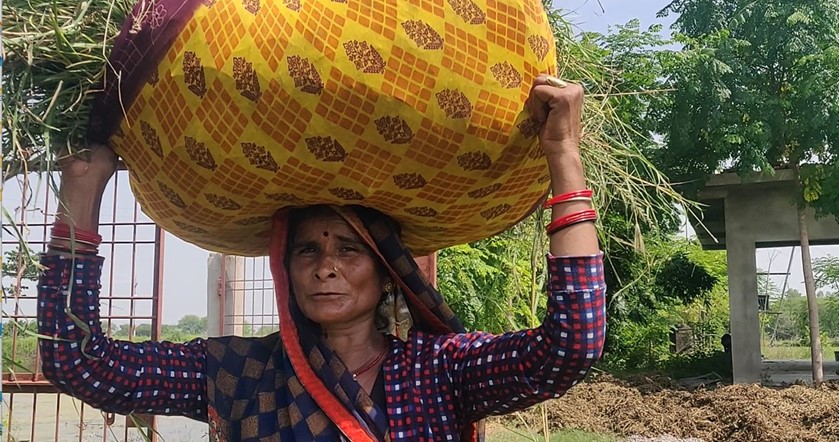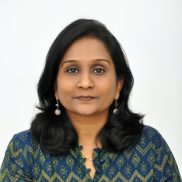Improved water management practices empower women in the drylands of India
Water reverses climate change effects and shapes women’s lives in Bundelkhand, India
A case study in Bundelkhand, India (recording the results at the end of 2023)
The increased temperatures and fluctuating rainfall patterns caused by climate change and the over-extraction of groundwater have led to desertification in many locations in the Bundelkhand region.
Not too long ago, much of the landscape in Bundelkhand was a bare, dry expanse. However, now you can drive past green fields interspersed with orchards and ponds in areas where water conservation is practiced. As migrant farmers return to farm their lands, the rise in agricultural activity can also be witnessed.
Water tables have risen in the pilot experiment villages of Lalitpur, Singar, and Sutta villages (in the Bundelkhand region of Jhansi, Uttar Pradesh) with the adoption of science-led rainwater harvesting methods and the construction of structures with government support and community involvement.
In a mere 3–5 years, the transformation is evident, especially in the way it has benefited the lives of women living in a highly patriarchal society. Issues still need attention, both from a policy and societal point of view, but that does not take away from the women’s initiative and drive to adapt and take on new roles.
Women: From farm laborers to flourishing farm managers
With dried-up wells now filling up with water, the all-too-familiar scene of a bevy of veiled women trekking miles while balancing water pots on their heads is a thankfully rare sight. This task used to consume 6-8 hours of their day.
What you can spot now is a couple of women at a hand pump, a woman drawing water from a backyard well, or, like Dheema Rekbar, sitting beside a water-filled pond in Lalitpur in a region that was once a ‘permanent fallow’ which means it is difficult to grow crops at any time of the year. 
“Five years ago, there was no water here,” says farmer Dheema Rekbar, gesturing behind her to a resurrected ancient rainwater-harvesting pond (haveli) near her farm.
Sitting in the shade next to the haveli with the food she brought for her husband and sons, Dheema explains what regular irrigation means to her: “Now we have water throughout the year, so we are growing fruit trees; crops like groundnut, chickpea, and wheat; and raising goats and cows.”
While she speaks, she keeps glancing over her shoulder and tugging down the saree corner covering her head. The society she lives in has conditioned her to never forget for a moment her place as a woman or her social standing. Women here have to cover their faces before men who are either older than them or from a higher caste.
Trudging uphill, we meet farmer Ajuddin Seharia, who was once a migrant laborer. He is among the 10,000-odd farmers who have returned to their farms with increased water availability. His wife, Kusum Bee, presented to the ICRISAT team the list of the extra work she now takes on due to their improved harvests, thanks to the time saved collecting water.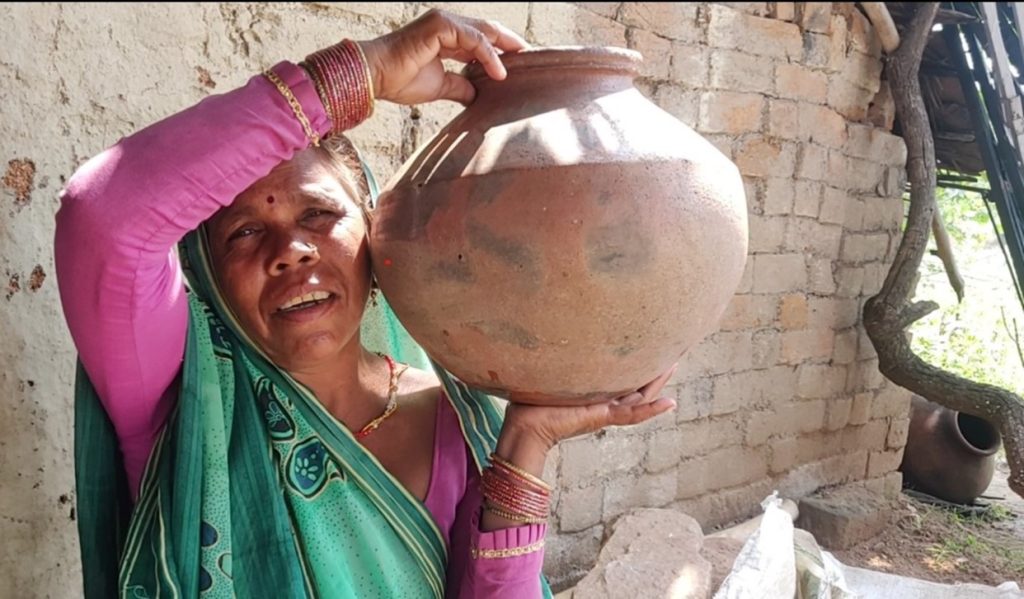
Farmer Kusum Bee shows the pot she used to balance on her head to fetch water from miles away.
“I no longer have to trudge miles to get water balancing pots of water on my head, nor do I have to go to work as a laborer in Delhi or Agra during the off-season. I am now busy growing crops and hiring people to harvest my fields. I also raise goats for extra income,” says Kusum Bee.
The first woman village chief is elected; girls are returning to school
Traveling to Sutta and Singar villages, the ICRISAT team learned that once ‘seasonal fallows’ (crops are grown only in one season), these areas can now support cultivation all year through. The region is comparatively greener, with substantial water bodies that cover a large acreage supporting cultivating various crops, fruit, and plantation trees.
Sangeeta Patel, the elected village head (Pradhan), focuses on the water-related issues in her village, among others. Sangeeta is the first woman chief in her village – a big step for women in this region. Still, it will take a massive leap for women to move from nominal leadership heavily influenced by the men in the family to transformative leadership, where women exercise true decision-making power.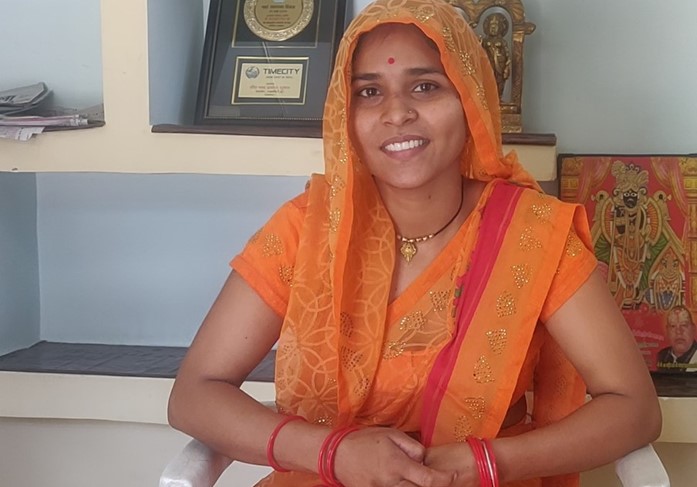
Sangeeta Patel is the first woman village head (gram pradhan) in Singar.
In the discussion the ICRISAT team had with the principal of the village’s primary school, Sonam Kumar, he talked of the increased enrolment in school, especially of girls, ever since the many positive changes water availability brought to the region. He referred to a time when school attendance was low, especially during the farming season, when children would have to help their mothers fetch drinking water or irrigate the farms. This meant keeping a vigil over water and drawing it out when available. Many farm ponds and borewells had run dry in this region due to the large fall in the water table. Through the project, 78 farm ponds were revived, leading to water recharge in the wells.

Primary school enrollment saw a rise in Singar.
How water conservation interventions can be a game-changer
While selected sites in Bundelkhand have benefited from Natural Resource Management, there are still areas that reel under water scarcity due to climate change-induced factors like escalating temperatures and changing rainfall patterns reducing groundwater recharge, coupled with human activities such as overuse and mismanagement of existing groundwater.
The damage caused by over-drilling groundwater from open wells/borewells was reversed by implementing a range of natural resource management methods, including the haveli cultivation system designed by Dr Ramesh Singh and his team of hydrologists and socio-economic scientists from the ICRISAT Development Center.
To implement the interventions, the team then worked with the consortia members of the Indian Council of Agricultural Research – Central Agroforestry Research Institute (ICAR-CAFRI), Indian Grassland and Fodder Research Institute (ICAR–IGFRI), and state and local governments.
“The water-engineering interventions increased groundwater recharge, raised the water table by 2–10 meters, and improved crop productivity by 20–80%,” says Dr Ramesh Singh.
Recognizing women as partners in greening the drylands
Based on recommendations from a study in the region led by ICRISAT’s gender specialist, Dr Padmaja Ravula, efforts were made to increase the participation of women in a committee to oversee water management.
“There are two women members on the committee, and though their numbers are small, it is indeed a big step for women living in a patriarchal society,” says Dr Padmaja.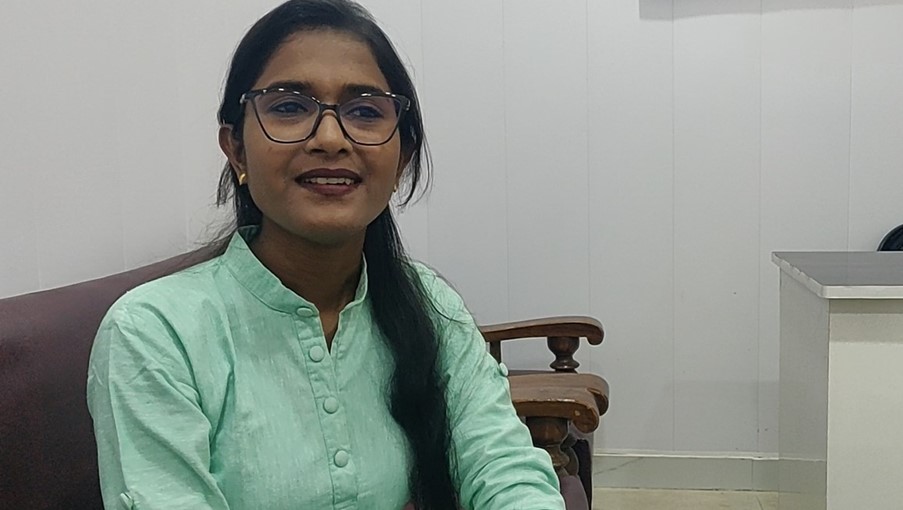
Rajani Gowthami is the youngest member of the water management committee set up to monitor interventions in the experiment villages.
Rajani Gowthami, a new member of the water management committee, mentioned, “I know the restrictions women here face, and there is a need for greater change. Awareness campaigns are needed to educate both men and women. Many times, I ask myself, why are there just two women? We should be working towards having 50% women on the [water] committee.”
Talking to the men in the region at various levels on how the project had benefited women, the one constant refrain was, “If men benefit, don’t women benefit?” While that sounds utopian, ICRISAT’s gender study advocates behavioral change communication to address gender issues that cannot be brushed aside.
The study suggests that involving women in building up social capital will enable women and young people to challenge the existing gender and cultural norms while reducing possible conflicts in the community and households.
Further reading:


















